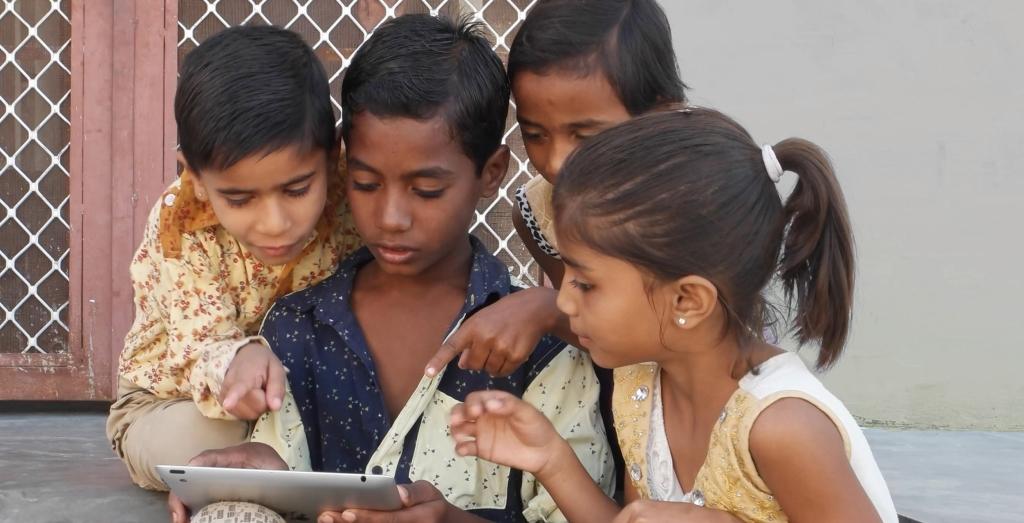Despite generally been seen as overly resistant to transformation, more change and innovation have probably occurred in education systems during the COVID-19 pandemic than in the previous decade. The emergency remote learning responses adopted during the pandemic have highlighted many highs and lows, and a host of questions: what worked well and what didn't?which innovations amplify, expose, or mitigate preexisting inequalities? what institutional capacities proved useful to quickly adapt to the crisis? how to scale and possibly sustain effective remote learning policies?
On International Day of Education, the World Bank and the OECD are publishing a collection of 45 education continuity stories: “How Learning Continued during the COVID-19 Pandemic: Global Lessons from Initiatives to Support Learners and Teachers”, jointly documented by the two organizations in partnership with the Global Education Innovation Initiative at Harvard University and HundrED. The case studies cover a variety of examples of how, amidst an unprecedented health crisis, governments and non-governmental organizations quickly responded to school closures through remote learning strategies.
The stories featured in the report illustrate how countries responded to critical challenges related to supporting teachers, parents, and students; lack of digital infrastructure; and strengthening organizational capacities to deploy remote and blended learning. Several lessons emerge.
Reimagining human connections - how did countries support teachers, parents, and students?
The pandemic showcased the importance of supporting teachers in different ways and providing them (and school principals) with training and resources.Designing educational repositories to share good practices, providing peer-to peer learning opportunities, and encouraging collaboration are some of the strategies that different stakeholders implemented around the world. In Ukraine, for example, the Virtual Edcamps (participatory professional development events organized by teacher volunteers and educators) facilitated peer-to-peer learning among teachers (attended by educators in 43 countries) as well as the sharing and dissemination of good teaching practices.
The pandemic has also highlighted the essential role that parents and caregivers can play, especially in early childhood education, provided they received effective guidance and assistance to promote learning at home.In India (Madhya Pradesh), for instance, within two months, 51 000 WhatsApp groups were created with over 1.9 million parents and 200 000 teachers making digital learning content and learning plans available to parents.
How to Spin and Recover a Cessna 150 https://t.co/ooT8vJDMEQ
— Ro Bot Fri Nov 02 09:11:24 +0000 2018

Facing inequalities - how did countries mitigate the lack of digital infrastructure and connectivity?
The pandemic highlighted preexisting digital inequalities: on average, two-thirds of school-aged students (3-17 years old) did not have access to the internet at home. Even in high-income countries, connectivity and IT equipment proved to be a challenge. Some countries had previous remote learning programs, such as radio education in Sierra Leone and Liberia (developed during the Ebola crisis), education TV in Mexico, or online platforms in Korea and Uruguay. Most countries had to overcome challenges related to an insufficient digital infrastructure. In Colombia, for example, the government subsidized internet access and supported students, teachers and parents using a multi-modal approach. The Ministry of National Education provided a wide variety of educational resources for free through its platform Aprender Digital (Digital Learning). In order to guarantee access to this content for children, the Ministry of Information Technology and Communications (MinTIC), in coordination with the Ministry of Education, enacted a law that compelled mobile operators to provide zero-rating conditions for the education community so that internet and mobile service providers wouldn’t charge for data use on specific services and websites. Uruguay’s Ceibal en casa (Ceibal at Home) offered a national learning management system with interactive communication features and over 170 000 educational resources, including adaptive solutions and gamification resources, to students and teachers. The program also increased access to devices in households where they were needed, expanding the hard digital infrastructure by 400% to better support disadvantaged students.
Engaging the ecosystem - how did countries enhance their organizational capacities through collaboration and partnerships?
The pandemic made it clear that given the complexity and multi-stakeholder nature of remote education endeavors, Ministries of Education cannot operate in isolation and must collaborate with other entities (public, private, academic). The overall challenge has been how to effectively articulate the digital education ecosystem, which tends to be very dynamic, and to rally all players (product and service providers) to deliver solutions. Peru’s Ministry of Education partnered with its Mexican counterpart to access the TV lessons they had previously developed for the rural population. In Nigeria, the State of Edo launched [email protected], a mobile-based extension of the Edo Basic Education Sector Transformation (Edo-BEST) program, developed as a public-private partnership between Edo’s State Universal Basic Education Board, the World Bank and Bridge International Academies. This program rapidly scaled and was used across Nigeria. In addition, various non-profit organizations have played a key role in supporting governments in designing and implementing remote learning strategies rapidly, monitoring access, and testing their efficacy.
Reflecting on the lessons learned and looking forward
The challenges ahead are immense: measuring learning loss, implementing recovery plans, deploying effective blended learning, reverting, or at least mitigating the negative implications of dropout, improving digital education delivery.To address these challenges, it is important to understand and reflect on the lessons from efforts to ensure learning continuity over the last two years. A retrospective analysis on what has worked, what hasn’t, and what can be replicated from one setting to another, can and should inform strategies to face the coming challenges in the next chapter of this global crisis.




